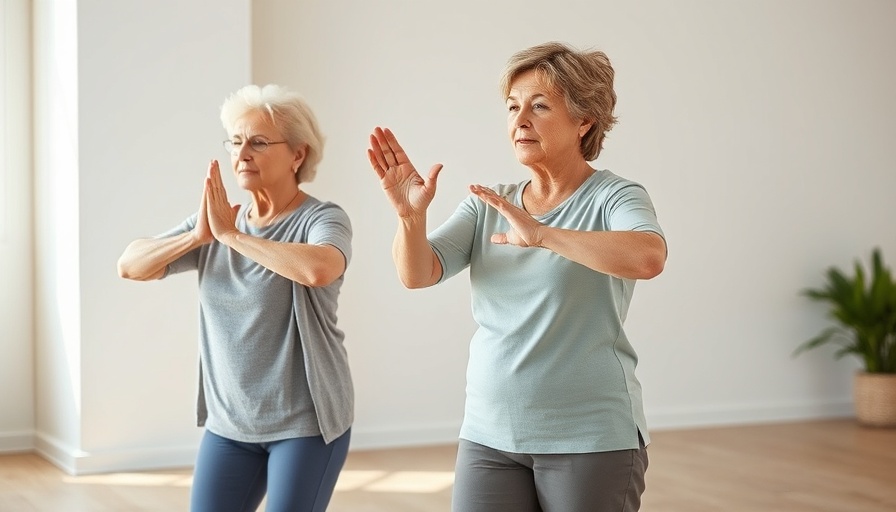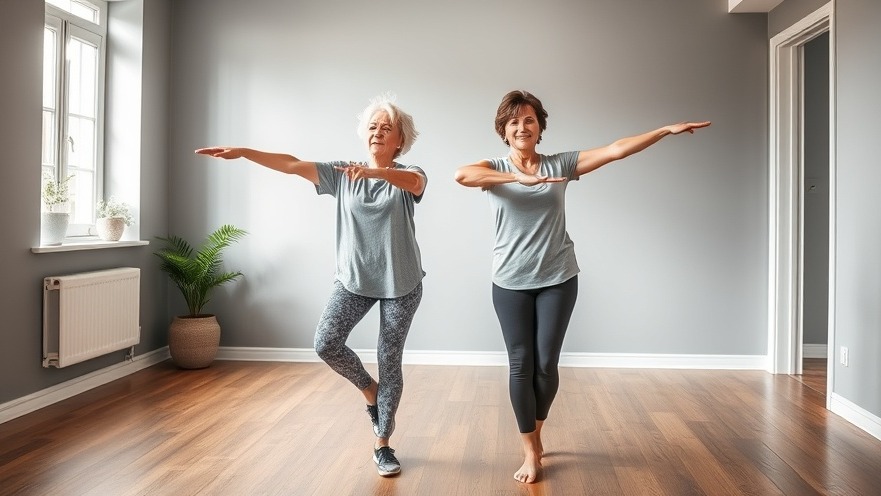
Strength Training for Seniors: A Path to Independence
As we age, maintaining strength and mobility becomes crucial for our independence and overall well-being. In the video 5 Must-Do Exercises for Seniors (60+) to Stay Strong & Independent, the host introduces five effective strength exercises, perfectly tailored for seniors looking to enhance their physical capabilities. With a focus on both seated and standing options, the routine provides inclusivity for all fitness levels. Whether you're completely new to exercise or looking to refine your skills, these exercises can be a foundational aspect of your daily routine.
In 5 Must-Do Exercises for Seniors (60+) to Stay Strong & Independent, the video covers essential strength exercises designed to keep seniors fit and active.
Why Strength Training Matters for Seniors
Strength training isn't just for bodybuilders or young athletes; it plays an essential role in the health of seniors. Engaging in regular strength workouts can improve bone density, enhance balance, and increase overall muscular strength, making everyday activities easier and safer. Many fears associated with aging can be alleviated through exercise, encouraging a positive mindset towards growing older.
Exercise One: Seated Dumbbell Press
This first exercise in the video is great for building shoulder strength. Using light weights, seniors can perform the seated dumbbell press either sitting upright in a chair or standing, depending on their comfort level. This helps improve muscle tone in the upper body, which is vital for tasks like lifting grocery bags or reaching for items on shelves.
Exercise Two: Seated Leg Lifts
Next up are seated leg lifts, which focus on strengthening the thighs and improving balance. These can be easily done from a sturdy chair, making them accessible even for those with limited mobility. Building strength in the legs is crucial, as it supports mobility and reduces the risk of falls, a common concern among the elderly.
Exercise Three: Wall Push-ups
Wall push-ups offer a gentle way to strengthen the chest, arms, and shoulders without placing too much pressure on the joints. Seniors can perform them at an angle that feels most comfortable. This body-weight exercise is key in maintaining upper body strength for activities we often take for granted, such as getting up from a sitting position or pushing open a door.
Exercise Four: Standing Calf Raises
Standing calf raises are pivotal for improving balance and strength in the lower legs. By doing this exercise next to a chair or counter, seniors can ensure safety, allowing them to build calf strength gradually. Improved calf strength equates to better stability, which can mitigate the risk of falls during day-to-day activities.
Exercise Five: Chair Squats
Lastly, chair squats combine several fitness aspects – strength, mobility, and confidence. Practicing squats with the support of a chair offers a sense of security while strengthening the entire lower body. It promotes leg strength, which is vital for everyday movements like sitting down or standing up.
Tips for Getting Started
If you're considering joining this exercise journey, remember that it's essential to listen to your body. Starting with lighter weights or no weights at all is perfectly acceptable. Water bottles or cans can be great alternatives for those just beginning. The most vital aspect is consistency and progression; increase weights or repetitions only when you feel comfortable.
Community Support and Resources
Engaging in exercise can also be more enjoyable when done in groups. Many local communities offer classes tailored for seniors that focus on fitness in a supportive environment. This not only promotes physical strength but builds social connections, enhancing mental well-being. Explore resources online or at local centers to find the best programs that fit your needs.
Your Journey to a Healthier Lifestyle
Embracing a fitness routine in your senior years can greatly enhance your quality of life. Each of these exercises contributes to a stronger, healthier you, empowering you to live independently. If this article has inspired you, don’t hesitate to reach out to a local fitness expert or health professional to get started on your strength training journey!
 Add Row
Add Row  Add
Add 




Write A Comment